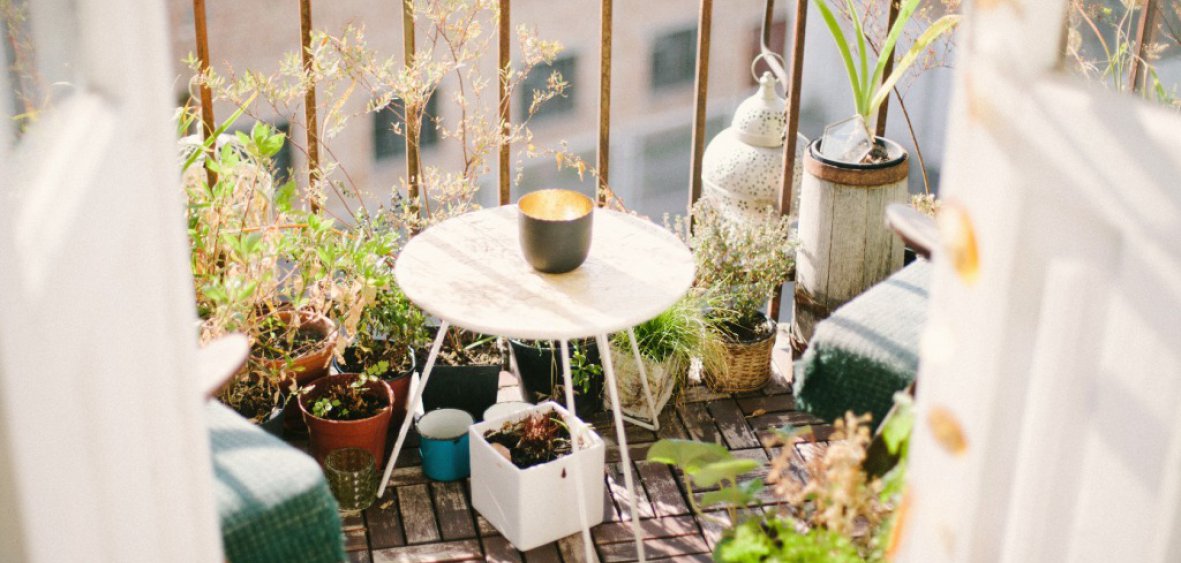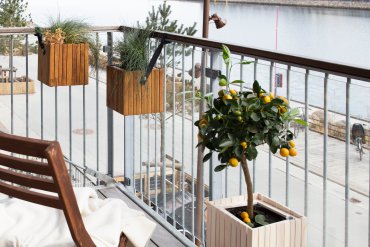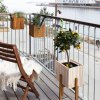A small garden should be arranged on a balcony located in a quiet place, away from the busy street and pollution. It can be used to grow plants and herbs that are not demanding, and even fruit on a sunny balcony.
Is every balcony suitable for a mini garden?
Arrangement of a balcony for a mini garden is a good idea if the balcony faces south or southwest. A lot of sunshine is an advantage in this case, because plants, especially fruit plants, need a lot of sunshine. A shady balcony is also suitable for a mini garden, but only for less demanding plants such as herbs or lettuce. An important factor is also the location of the entire block of flats. If the building is located in the city centre, on a busy and polluted street, it is not advisable to have a garden on the balcony. This applies especially to the lower floors, where exhaust fumes are more readily accessible.
Vegetables and fruits that can be grown on the balcony
Many plants are not suitable for balcony cultivation due to their large size and extensive root system. It is also not recommended to grow vegetables and fruits with high cultivation requirements and a long growing season. Among the plants that are difficult to grow on the balcony are cabbage vegetables, large pumpkin vegetables (pumpkin, zucchini, squash) and root vegetables (parsley, beetroot, carrot, celery). Parsley and celery may be grown on the balcony only for leaves. Radishes, lettuce, cocktail tomatoes, onions, chives and lakes (e.g. basil, mint, rosemary, thyme, etc.) will work well. Strawberries and gooseberries can also be grown on a sunny balcony.
How to prepare a flower pot for the balcony?
The containers in which the crops are planted on the balcony should be large and deep. You can buy ready-made pots or make them yourself, for example from chipboard. Ceramic or plastic containers are immediately ready to use, wooden pots and wood-like materials should be lined with foil beforehand. Place a layer of aggregate on the bottom of the pot, such as expanded clay, which stores the water well. The soil is then poured in to suit the needs of the plants (for example, for balcony flowers, soil with extended moisture content, for cultivated plants, soil with fertilizer). The cuttings are placed in the middle of the container and covered with another layer of soil. One more layer of expanded clay can be laid on top of the pot, which prevents soil from falling out of the pot in the event of heavy rain.
Also check
- March 14, 2022
Bei der Fällung eines Baumes ist die richtige Arbeitstechnik äußerst wichtig. Sie dienen dazu, sichere Arbeitsbedingungen zu gewährleisten und die Effizienz zu steigern. 1...
Read more- June 26, 2019
Own garden is a dream of many people. Relax in the greenery, silence, beautiful flowering flowers or fresh herbs.... Unfortunately, not everyone has the possibility to have...
Read more



















